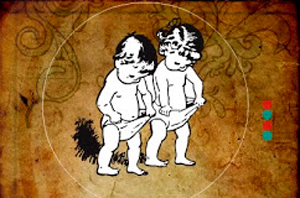

A feminist has told me that a friend of her has got into the gender transition process. At birth, the doctors told her she was a child, but he recognized that she felt like a man. You should decide whether to take testosterone or remove the breasts. My acquaintance has confessed to me that it is hard for him to understand his friend's process: to use the man's name he chose, to use the male gender when talking about him, to understand the need to conceal his breasts through a corset.
Understanding, understanding, understanding... It's the verb that uses the most. But why is that need to understand someone else's experiences? We should not understand anything, but respect it. He identifies himself as a man, therefore, he wants to develop that identity and sees the need to change the body so that society identifies him as a man. It is not for us to approve their process. There should be no state interference, but that is the case. If I am Mary of birth but prefer the name of Miren, I will have the opportunity to change my name on the identity card and there will be few people who threaten my decision. If instead of Look at the name that corresponds to my identity, according to the law, I will have to spend two years of a process of hormone and therapy, and the psychiatrist will have to confirm that I am transsexual – many times according to sexist stereotypes –. To this requirement of the system is added the attitude of society. Transgender and transgender people have to listen to everybody's opinion and judgment.
In classic feminism, too, male transsexuality is often seen as a betrayal. Transgender men are antifeminists. They go to the group of “enemies”, thus obtaining the privileges of men. But against this prejudice, transgender men and transgender people are building alternative models of masculinity.
Another of the usual attitudes is the paternalistic thinking of those who have to accompany transgender people, and I am not going to accompany them in their expression, but in the sense of helping. “I don’t know what advice to give,” that acquaintance told me. I answered as diplomatically as possible: “Maybe more than counseling, you can learn something from your friend’s experience.”
Feminist theory argues that gender is a social construction. He denounces that from a young age they lock us in the categories of “man” and “woman” and impose roles, obligations, abilities and attitudes according to our genitals (hierarchized, thus maintaining the patriarchal order). This relationship between biological sex and gender is presented as natural by the sexist society, and transgender and intersex people break with this naturalization. Every day they encounter the violence of the gender dictatorship. Although transphobic aggressions are constantly experienced, they claim the right to decide about their identity and their body. Many have gone from the classic discourse of transsexuality “I was born in the wrong body” to spreading the message “Sexist society is what is wrong”, thus criticizing the binarism that limits the freedom of all people.
Therefore, the struggle for the depathologization of trans identities has a direct connection with feminism. If we want to understand and help people who move between genders, the first thing we need to do is to work the malestars and transphobic prejudices that produce their processes and, therefore, sexist.